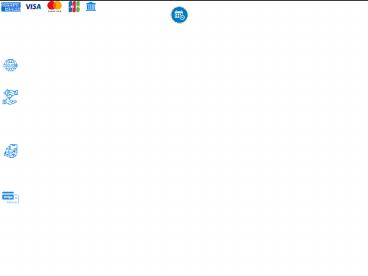INSULINOMA - PowerPoint PPT Presentation
1 / 16
Title:
INSULINOMA
Description:
INSULINOMA Epidemiology Pathophysiology & Symptoms Dignosis & Locallization Management Anaesthetic considerations www.anaesthesia.co.in anaesthesia.co.in_at_gmail.com – PowerPoint PPT presentation
Number of Views:1035
Avg rating:3.0/5.0
Title: INSULINOMA
1
INSULINOMA
- Epidemiology
- Pathophysiology Symptoms
- Dignosis Locallization
- Management
- Anaesthetic considerations
www.anaesthesia.co.in anaesthesia.co.in_at_gmail.c
om
2
Epidemiology
- First described by Harris in JAMA 1924
- Commonest hormone producing NET of GIT
- 99 of pancreatic origin
- 90 solitary, 90 lt 2cm, 90 benign
- 8 ass. with MEN I (multiple, malignant in 25)
- Median age at presentation is 47yrs
- F to M ratio 1.41
3
Pathophysiology
- Hypoglycemia
- ?glucagon(glycemic threshold
65-70mg/dl) - ?catecholamines
- ?cortisol GH
- Neuroglucopenic symptoms(lt50mg/dl)
4
Pathophysiology
- Reduced epinephrine response in response to
chronic hypoglycemia (hypoglycemia unawareness) - Present with neuroglucopenic symptoms
- Nonspecific episodic in nature
5
Symptoms
- Neuroglucopenic symptoms
- Headache
- Visual disurbances
- Lethargy,lassitude,confusion
- Difficulty in speech, thinking
- Personality changes
- Convulsions, coma
6
Symptoms
- Neurogenic
- Cholinergic symtoms
- Hunger
- Sweating
- Parasthesia
- Adrenergic symptoms
- Anxiety, nervousness
- Tremors
- Tachycardia, palpitations
- hypertension
- Wt gain in 20-30
- Appear in early morning, after fasting
- Ppt by exercise
7
Diagnosis
- Whipples triad
- Hypoglycemic symptoms brought about by fasting or
exercise - ?BS during symptoms
- Relief on administration of glucose
- ? C peptide level
- ? plasma insulin
- Absence of sulfonylurea
8
Diagnostic testing
- 72 hrs fast(gold standard)
- Plasma glucose 2.5 mmol/l
- Plasma insulin 6 µunits/ml (43 pmol/l)
- Plasma C-peptide 0.2 nmol/l
- Plasma proinsulin 0.5 nmol/l
- Plasma sulphonylurea Negative
- Plasma ß-hydroxybutyrate lt2.7 mmol/l
- Change in glucose with 1 mg glucagon 25 mg/dl at
30 min - symptoms develop in 35 of patients within 12 h,
75 within 24 h, 92 within 48 h and 99
within 72 h - C peptide suppression test
- Stimulation tests with glucagon, Ca, tolbutamide
9
Locallization
- CT, MRI
- Transabd USG, EUS
- Intraop US
- Somatostatin receptor scintigraphy
- Angiography
- Selective intra-arterial Ca. stimulation with
hepaic venous sampling
10
Management
- Medical
- When awaiting surgery
- Metastatic disease
- Failed surgery
- Dietary
- Diazoxide (with hydrochlorthiazide)
- CCBs, Verapamil, Nifedipine
- Somatostatin analogues, Octeotride
- CT- Streptozocin, 5FU, Doxarubicin
- Hepatic art. embolization
11
Management
- Surgical
- Resection is the treatment of choice
- Specialized units
- Enecluation in most cases
- Distal pacreatectomy/ whippless procedure in a
few - Blind resection shouldnt be performed
12
Anaesthetic considerations
- Association with MEN I (pancreas, pituatary,
parathyroid tumors) - Preop dehydration
- Periop BS management
- Hyperglycemic rebound
- Postop BS management
13
Anaesthetic considerations
- Preop dehydration
- Osmotic diuresis
- ? glucose metabolism
- CVP line
- Monitor fluid status
- Give hypertonic glucose
- Effect of anaesthetics
- Hyperglycemic effect, EnfgtHalo
- TIVA(Sato et al,Masui. 1998 Jun47(6)738-41)
14
Anaesthetic considerations
- BS management
- Frequent monitoring, every 15-30min(satisfactory
as long as BS60mg/dl) - BS level level at which pt becomes symptomatic
- Glucose requirement 6-8 mg/kg/min
- 4 approaches to avoid intraop hypoglycemia
- Epid anaesthesia(ZianZui et al, CMJ 1980)
- Mod hypeglycemia by continuous glucose infusion
- Mod hyperglycemia with nonglucose IVF
- Biostater
15
Anaesthetic considerations
- Intraop hypoglycemia
- Symptoms are masked under GA
- Cholinergic symptons like sweating?
- Hypotensio brady?? (Chari et al, Anaesthesia
1977) - Neural dysfunction measured by BAER/SSEP
- Treatment
- IV dextose (0.5g/kg bolus? 4-8mg/kg/min, titrate)
- Glucagon 0.1-0.3mg/kg
- Diazoxide, IV octeotride
- Ppt by tumor handling
16
Anaesthetic considerations
- Hyperglycemia rebound
- Can be E/o of tumor removal
- Maynt be as effective as thought for diagnosis
(Muir et al, Anesthesiology 1983) - Confusion with BT, mod hyperglycemia approach
- Postop BS management
- Hyperglycemia likely for 2-3 days
- May need small amount of sc insulin
www.anaesthesia.co.in anaesthesia.co.in_at_gmail.c
om































